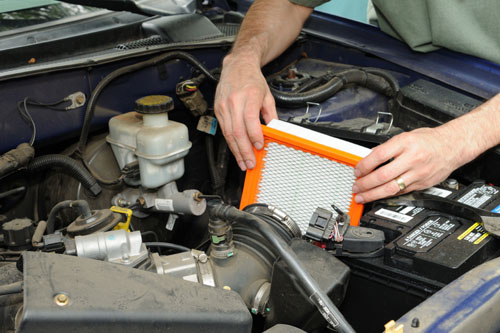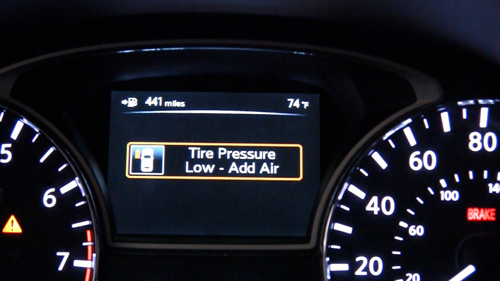Actually, there is no such thing as a tuneup in the traditional sense of replacing parts to bring the ignition and fuel systems up to specs for maximum performance and efficiency, and there hasn’t been for years.
About the only things left from the traditional tuneup are new spark plugs, which is typically done every 100,000 miles, and replacing the air filter periodically. The federal EPA and Department of Energy say that replacing a clogged air filter will not improve gas mileage but can improve acceleration 6% to 11%. The agencies do not say what benefit can be derived from fresh spark plugs, but computers that control today’s engines adjust the air-fuel mixture and spark timing to compensate for wear, such as when the electrodes on spark plugs are worn down.
Even so, some car owners still dutifully take their car in periodically to have it “tuned up.” Instead, service technicians will inspect and perhaps test the fuel, ignition and emissions systems to look for faulty vacuum hoses, oxygen sensors and other parts that can hurt performance. The federal government, for example, says a bad oxygen sensor can give engine computers false readings and reduce fuel economy as much as 40%.
Having your vehicle serviced and inspected periodically is a good way to extend its life and keep it operating efficiently. However, walking into a repair facility and asking for a tuneup is a bad idea because it indicates you’re still living in the previous century and have extra money you would like to spend. Some in the auto-repair business will take advantage of those opportunities.
Look in the owner’s manual for your vehicle (or separate maintenance schedule) to find what the manufacturer recommends, and see if you can even find the words “tuneup.” For example, we looked at the maintenance guide for the Ford Fiesta that also applies to other Ford vehicles. The first mention of anything related to a traditional tune-up was to replace the engine air filter every 30,000 miles. The only other related item was to replace the spark plugs every 100,000 miles.
Source: Cars.com
While it may seem like a mundane task, inflating tires is much more crucial to your car than you may think, and it results in a safer and more economical experience on the road. Your vehicle’s handling also will be greatly improved as the larger a tire’s inflated footprint, the more responsive and comfier the ride balance will be.
Because it’s National Tire Safety Week, it’s the perfect time to check your car’s tires.
Before starting
To find your tires’ proper inflation level, look for a sticker on the driver-side doorjamb. It displays the vehicle weight restriction and tire information. The info is also found in the maintenance or car-care section of your vehicle’s owner’s manual.
Don’t refer to the sidewall markings on your tires, which in part specify the maximum tire pressure — not the recommended pressure.
Unless your tire is visibly flat, don’t judge tire inflation just by looking at it; you have to use a tire pressure gauge to get the correct pounds per square inch reading. There are three types of tire-pressure gauges: digital, internal slide and dial. Prices range from $5 for a basic gauge to more than $30 for one that is digital, has an air-release button — or even talks. All will do the job, but you may want to consider the conditions in which you’ll be using your gauge. “We’ve found that low-cost digital pressure gauges are very accurate and maintain the accuracy longer, but in extremely cold temperatures the gauge may not show up properly,” said John Rastetter, Tire Rack’s director of tire information services.
Tips for checking and filling your tires
Tire manufacturers suggest checking tires when they’re cold for the most accurate reading. Outside temperatures can cause tire pressure to vary by as much as 1 psi per 10 degrees; higher temperatures mean higher psi readings. “Tires are black; what does black do? Attract heat,” Rastetter said, noting the importance of finding a shady place to check and fill all four tires.
Temperature plays a huge part in tire psi, Rastetter said, adding that the most crucial time of year to check pressure is in fall and winter when days are shorter and average temperatures plummet.
Check your tires in the morning before going anywhere, because as soon as you get behind the wheel for an extended amount of time, psi will rise. Rastetter said that if you’ve been on the road a long time and notice higher psi in your tires, don’t let the air out, as the increase in pressure has built up due to the warm, constantly-in-motion tires
What to do
1. Pull your car onto a level surface in the shade.
2. Remove dust caps from the tires’ valve stems.
3. Using your tire gauge, firmly press the tip of the gauge straight on to the tire’s valve stem for a brief moment.
4. The tire gauge should provide a psi reading; if the number seems unrealistically low or high — for example, 85 psi or 1 psi – you will need to repeat the previous step, ensuring that the tire gauge’s tip is properly making contact with the valve stem.
5. If the tire gauge’s recorded reading is higher than the manufacturer-recommended rating, press the gauge tip on the valve stem until you hear air leak out. Check the tire pressure again.
6. If the reading is lower than recommended, fill the tire with air by firmly pressing the air-hose tip onto the valve stem. You will hear air quietly enter the tire. If you hear air leaking or spraying out, you need to double-check that the connection between the air hose and the tire’s valve stem is secure.
7. When you think you’ve added or let out enough air, check the pressure a few times with the gauge.
8. Replace the valve dust caps. Rastetter emphasized the importance of keeping dust caps on during winter driving because if water gets into the valve stem and freezes inside the tire, it could cause a flat.
While you’re at it, check your spare tire’s pressure. You don’t want to have a flat tire and then find out your replacement is flat, too.
Make these steps part of your routine. It will benefit your vehicle and your wallet.
Source: Cars.com





